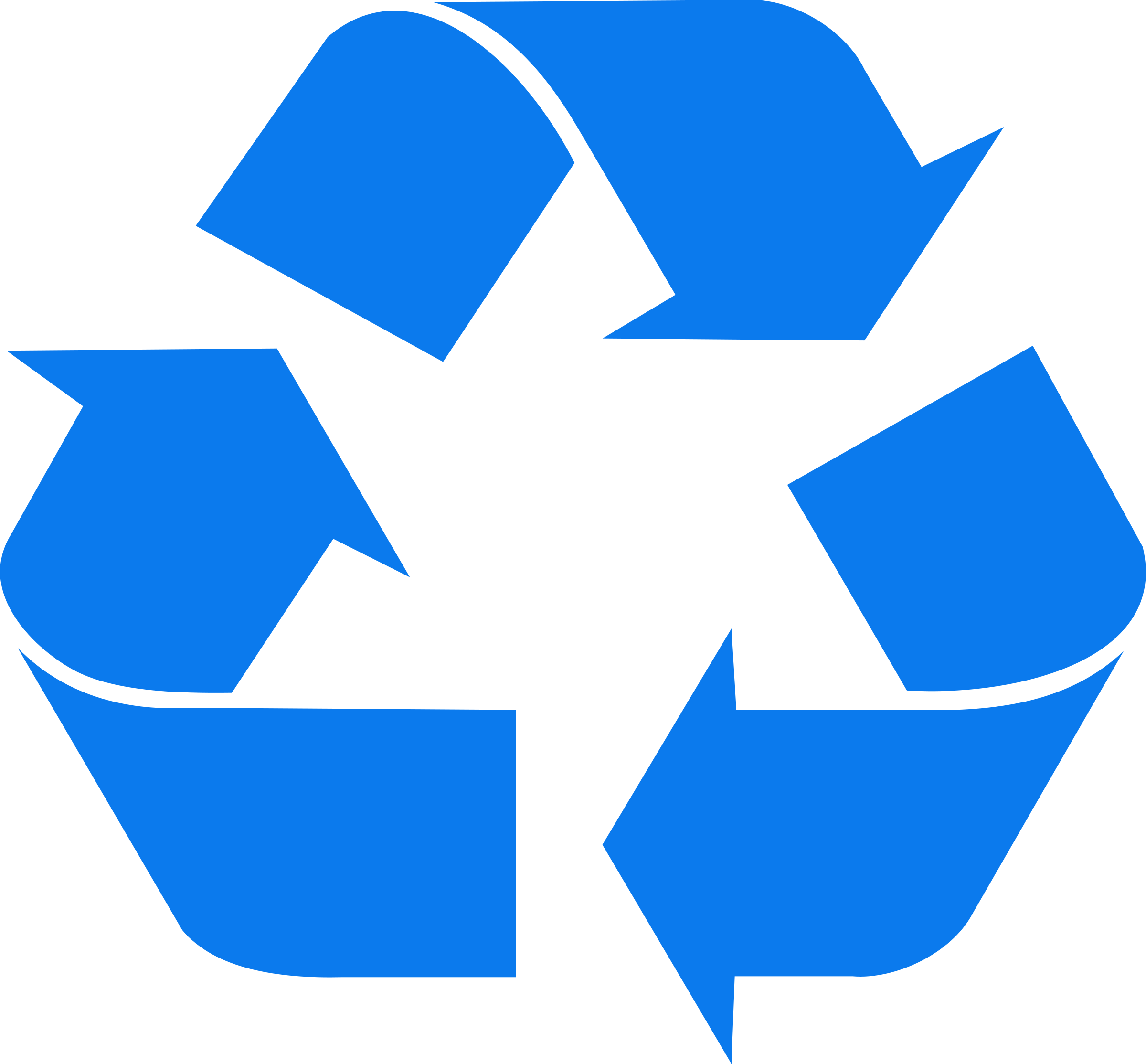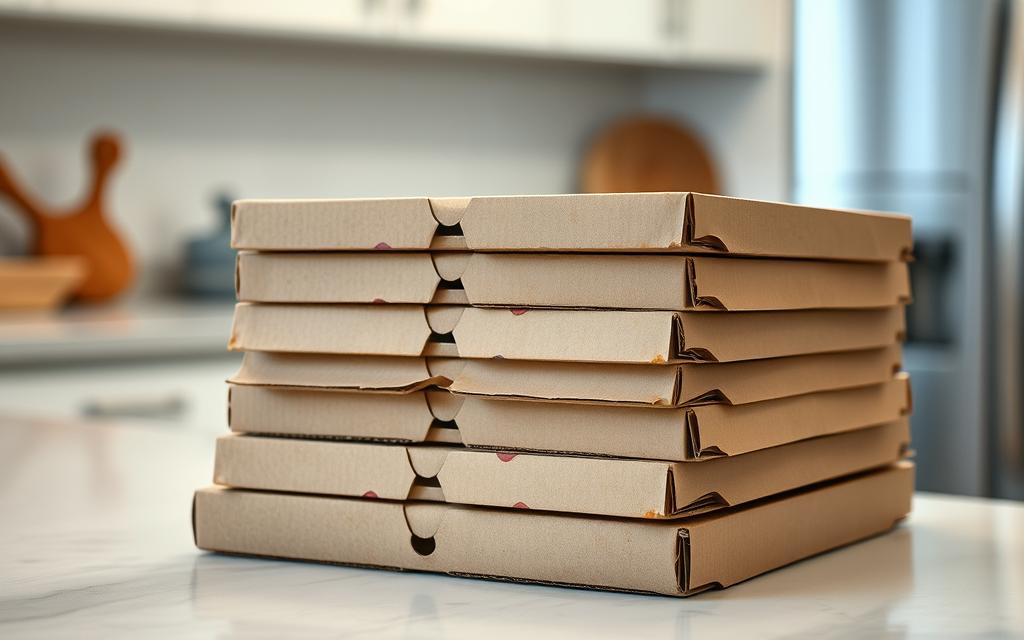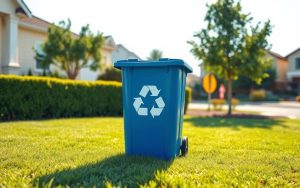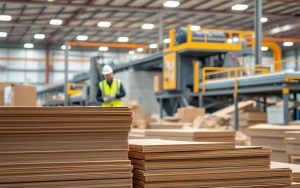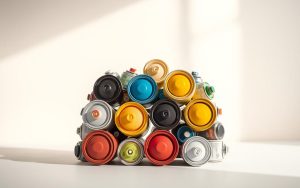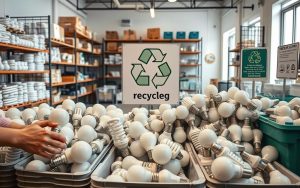Disposing of greasy cardboard containers often sparks debate. Many wonder if these items belong in the recycling bin. The answer isn’t always straightforward, as conflicting opinions exist.
Grease contamination is a key concern. It can hinder the recycling process, making it essential to understand local guidelines. Proper disposal methods ensure sustainability and reduce waste.
The U.S. paper industry plays a significant role in this discussion. According to AF&PA, it generates $435 billion annually. Initiatives like Better Practices, Better Planet 2030 highlight the industry’s commitment to eco-friendly solutions.
This article explores grease contamination, local recycling rules, and disposal tips. Understanding these factors helps make informed decisions for a greener future.
Introduction to Recycling Pizza Boxes
Cardboard recycling faces unique challenges when dealing with grease contamination. Unlike plastic or metal, paper products lack a heat process to burn off grease. This makes proper disposal crucial for maintaining the integrity of the recycling process.
Greasy materials, such as pizza boxes, combine with pulp during slurry creation. This contamination can ruin entire batches, leading to significant waste. Additionally, contaminated items may attract pests during weeks-long storage, further complicating the process.
The American Forest & Paper Association (AF&PA) highlights the importance of sustainable practices. With 925,000 jobs in the U.S. forest products industry, proper recycling supports both the economy and the environment.
Improper disposal of cardboard has far-reaching consequences. Wish-cycling, or placing non-recyclable items in the bin, disrupts the entire recycling system. Understanding these challenges helps reduce contamination and promotes eco-friendly habits.
Can You Recycle Pizza Boxes?
Grease poses a significant challenge in the recycling process. When oil bonds with cellulose fibers in cardboard, it creates contamination that soapy water alone cannot remove. This chemical bonding disrupts the slurry process, where materials are broken down for reuse.
Even a single greasy item can compromise an entire 15-ton batch of paper. This highlights the importance of proper disposal to maintain the integrity of recycling programs. Facilities rely on clean materials to produce high-quality recycled products.
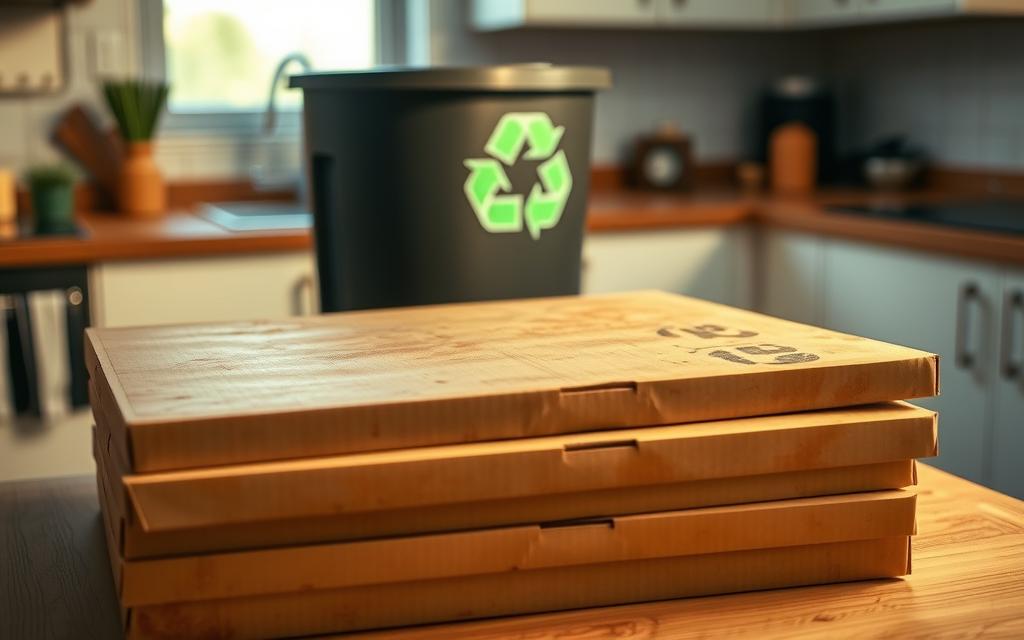
Recycling capabilities vary by region. Some municipalities, like those in specific cities, accept grease-laden cardboard through anaerobic digestion programs. These initiatives convert waste into renewable energy, offering an eco-friendly alternative.
Ignoring local guidelines can have serious consequences. Contaminated materials may be rejected, leading to increased waste and higher processing costs. Understanding regional rules ensures effective participation in recycling efforts.
Why Grease is a Problem
Oil contamination affects the entire recycling process. Mills struggle to separate grease from pulp, which can ruin entire batches. This not only wastes resources but also increases operational costs for recycling facilities.
Chemical bonding between oil and cellulose fibers makes it difficult to produce clean recycled paper. This issue underscores the need for proper disposal practices to minimize contamination.
Local Recycling Guidelines
Regional variations in recycling capabilities mean guidelines differ across the U.S. Some areas have advanced programs that handle grease-laden materials, while others do not. Checking local rules ensures compliance and supports sustainable practices.
The American Forest & Paper Association (AF&PA) emphasizes the industry’s role in sustainability. With a 4.7% contribution to U.S. manufacturing GDP, proper recycling supports both the economy and the environment. Renewable biomass energy initiatives further highlight the industry’s commitment to eco-friendly solutions.
How to Properly Recycle Pizza Boxes
Effective recycling of food-soiled materials depends on proper separation techniques. Grease contamination can be minimized by following specific steps. This ensures that clean cardboard is recycled while contaminated parts are disposed of responsibly.
Cutting Off the Greasy Parts
Separating clean tops from greasy bottoms is a simple yet effective method. Use scissors or a knife to cut the box into two parts. Place the clean half in the recycling bin and the greasy half in the trash.
Some pizzerias use protective corrugated layers to reduce contamination. This innovative approach keeps grease from soaking into the cardboard. It’s a practical solution for both businesses and consumers.
Alternative Disposal Methods
For heavily soiled boxes, composting is a viable option. Organic waste facilities can process food-soiled paper, turning it into nutrient-rich compost. This method reduces landfill waste and supports sustainable practices.
Landfills are another option for contaminated pieces. However, composting is more eco-friendly. Below is a comparison of the two methods:
| Method | Pros | Cons |
|---|---|---|
| Composting | Reduces landfill waste, produces compost | Requires access to composting facilities |
| Landfill | Convenient, widely available | Increases landfill volume, less eco-friendly |
Innovative solutions like Domino’s box liners also help reduce contamination. These liners prevent grease from seeping into the cardboard, making recycling easier. For more tips, check out this guide on proper disposal methods.
According to the EPA, proper recycling of paper products can significantly reduce waste. Understanding these methods ensures a cleaner, greener future.
Common Misconceptions About Recycling Pizza Boxes
Misunderstandings about recycling greasy materials are widespread. Many believe that all cardboard is recyclable, regardless of contamination. This leads to improper disposal and disrupts recycling systems.
One major issue is wish-cycling, where non-recyclable items are placed in the recycling bin. This practice accounts for 25% of the recycling stream, causing significant economic and environmental costs.
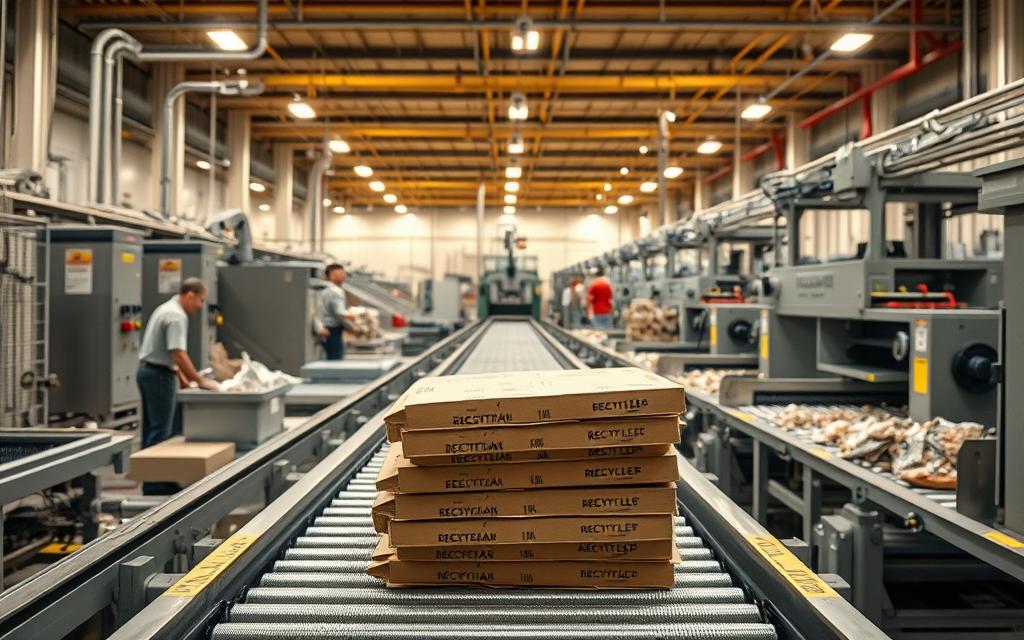
Wish-Cycling and Its Impact
Wish-cycling stems from good intentions but has harmful consequences. Contaminated loads increase processing costs and reduce the quality of recycled materials. Facilities often reject entire batches due to contamination, leading to more waste in landfills.
“Proper recycling starts with understanding what belongs in the bin,” says a GreenCircle Certified facility representative. Educating the public is key to reducing wish-cycling and improving recycling efficiency.
Advances in Recycling Technology
Innovations in technology are addressing grease-related challenges. Optical sorters now detect contamination with greater accuracy, improving the quality of recycled materials. Pilot programs are testing enzyme-based methods to separate oil from cardboard fibers.
Another trend is the use of poly-coated alternatives to traditional cardboard. These materials are easier to clean and recycle, reducing the risk of contamination. Below is a comparison of traditional and advanced recycling methods:
| Method | Pros | Cons |
|---|---|---|
| Traditional Recycling | Widely available, cost-effective | Prone to contamination, limited efficiency |
| Advanced Technology | Higher accuracy, reduced contamination | Expensive, requires infrastructure upgrades |
The American Forest & Paper Association’s Better Practices 2030 initiative highlights the industry’s commitment to sustainability. By adopting advanced technology, the recycling sector aims to reduce waste and support eco-friendly practices.
Conclusion
Making informed choices about disposal methods supports sustainability efforts. Understanding how to handle greasy materials ensures cleaner recycling streams and helps reduce waste. By following local guidelines, individuals contribute to the efficiency of recycling programs.
The American Forest & Paper Association (AF&PA) plays a vital role in advancing recycling technologies. Their initiatives promote eco-friendly practices and support the industry’s commitment to sustainability. Innovations in processing greasy materials are paving the way for more effective recycling solutions.
Every action counts. Checking local resources for proper disposal methods ensures compliance and maximizes environmental benefits. Together, these efforts create a positive impact on waste reduction and resource conservation.
